Globe & Mail: 'Instead of dying, it's been given a second chance' – story about Joy Kogawa's childhood home and beloved cherry tree



1) Joy and Timothy @ Kogawa House circa 1939 2) Joy and Timothy with friends circ 1939 3) Rev. Tim Nakayama, Roy Miki, Joy Kogawa and Todd Wong May 2005, at the Obasan Launch for One Book One Vancouver, Vancouver Public Library.
This is truly a miracle story. I remember in the early 1980's shelving “Obasan” on book shelves while I worked at the Vancouver Public Library. Just the existence of the book spoke to me about Asian-Canadian history and identity. I was inspired to learn more about Japanese-Canadian history as part of my own Asian-Canadian history, as part of my own identity as a Canadian.
The very first time I met Joy Kogawa was at Expo 86. She gave a reading, and read a poem titled “Oh Canada,” about the sorry and loss of the internment. I introduced myself to her friend Roy Miki and he gave me Joy'
s copy of the poem.
Many years later, I am honoured to call these great Canadians as friends. It is a pleasure to be president of the Historic Joy Kogawa House Society, with so many good-hearted people on our board.
As I told CBC arts reporter Paul Grant, back in 2005 when we had just re-started the Save Kogawa House campaign, “Saving the house is a calling. It's something that has to be done.
Today, we have a literary and historic landmark for not only the City of Vancouver, but for all Canadians. And we still have work to do. We must restore the house to its 1942 qualities when Joy and her brother Tim lived in the house, before they were sent away to the internment camps and beet farms. We must build a writer's-in-residence program for this house.
'Instead of dying, it's been given a second chance'
Celebrated author Joy Kogawa returns to the house her
family lost during their wartime internment and revels in its future
VANCOUVER
— As a girl, Joy Nakayama would write from her family's miserable shack
in the Alberta sugar beet fields to the new occupants of the
comfortable Vancouver home seized from her family during the wartime
internment of Japanese Canadians.
She begged the owners for a chance to get the house back. They never replied.
More than 60 years later, in a charming circle of history, Ms.
Nakayama, better known as the celebrated writer Joy Kogawa, stood once
more in her childhood home this week, eager to guide a visitor through
its emotional past.
From her former bedroom window, she gazed again at the famous
backyard cherry tree that forms the heart of her memories and so much
of her writing.
“It's the tree, more than anything else, that grips me,” Ms. Kogawa
said. “It's as if it has a message written upon it, that everything
we've gone through in life is known. … When it dies, I feel I will
die.”
Split in the middle, oozing sap, with many of its limbs missing, the
gnarled, ailing tree is nonetheless draped in a glorious display of
springtime blossoms, as much a miracle of survival as the house itself.
The modest bungalow in the city's now fashionable Marpole district
was just days from destruction when a last-minute, anonymous donation
of $500,000 allowed The Land Conservancy to buy it, with hopes of
establishing a writers' residence and a tribute to Ms. Kogawa and her
award-winning novel Obasan, about the tragedy of internment.
The donor's identity is to be disclosed at a ceremony this
afternoon. But The Globe and Mail has learned that the improbably large
sum came from Conservative Senator Nancy Ruth, sister of former Ontario
lieutenant-governor Henry Jackman.
“Why? Because I have a tremendous fondness for Joy Kogawa,” Ms. Ruth
explained, adding with a modest chuckle: “And also because of the tax
incentives of the Harper government. No capital gains on stock earnings
given to charity.”
Internment was a shameful act, she said. “I can remember reading Obasan and weeping at the pain.”
Yet, Ms. Ruth said, Ms. Kogawa retains a deep sense of faith in
humanity, that reconciliation and hope are still possible, even in the
face of things that are terrible.
Writers residing in the house in the future will have to deal with
that, Ms. Ruth said. “How can you sit at a desk and look out at that
cherry tree and not think from whence all that came?”
As for Ms. Kogawa, the six-year-old who once dangled upside down
from the tree's low branches is now grey-haired and 72, albeit with
undiminished energy and flashing eyes.
She can scarcely comprehend the astounding chain of events that has
brought her childhood refuge back after so many years, particularly on
a street where many residences were torn down long ago in favour of
larger, more expensive dwellings.
“I had given up. I'd gone to the realtors. I pleaded and begged not
to let it go. I offered to write books for them, to name characters
after their children. It all fell on deaf ears.”
Now, she marvelled, “such a strange thing has happened here. It's
all a bit surreal, dream-like. I don't know even how to describe it.
It's like some movie script, this sense of wonder and delight.”
During her tour of the house, Ms. Kogawa indicated how much has
changed over the years. New walls, doors and windows replaced, closets
ripped out.
“My mother's piano was right there,” she said, gesturing toward an
empty corner of the living room. “The gramophone was over there, and
that's where the goldfish
bowl stood.”
She headed into the basement. Suddenly, there were gasps of surprise.
“There they are! The windows and the doors!” She pointed to a pair
of fine French doors and old window frames, carefully stacked along a
wall. “And there's some of the cedar planks that my father put in.
Wouldn't it be great if things could be brought back to the way they
were?”
Ms. Kogawa brought back a few family possessions that survived
internment. Her brother's toy cars, her mother's Japanese tea set,
tattered picture books. “These are the pictures I grew up with.” And an
old apple crate. “That was saved, because it was useful when we had to
move,” she said, without bitterness.
It was a good day.
“The story of this house has come to a wonderful place, like a new beginning,” she said, groping to find just the right words.
“It had one birth. It lived its life, and then, instead of dying,
it's been given a second chance. That's a wonderful, wonderful thing to
have.
“It's going to live again. It will breathe. It will bring life to
people. It will bring reconciliation. Those are the things this house
has been called to do.”


 View Friday's Schedule
View Friday's Schedule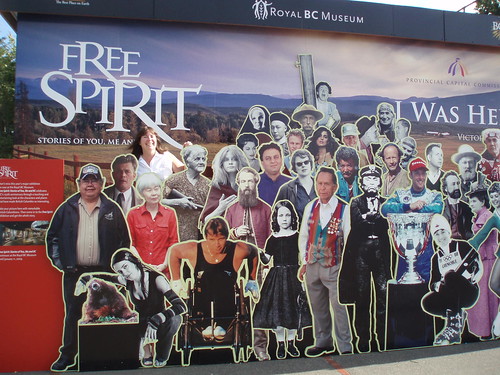
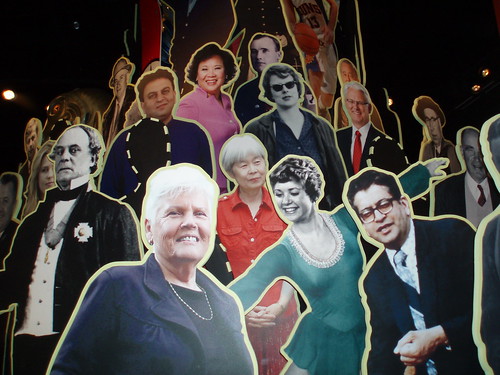
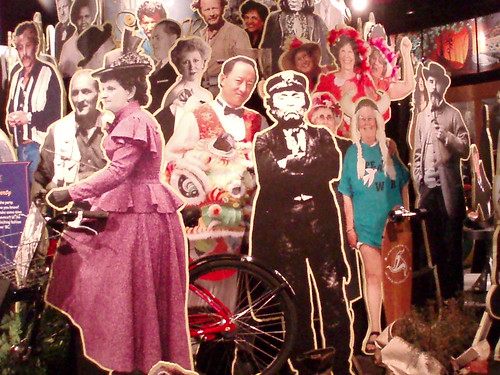

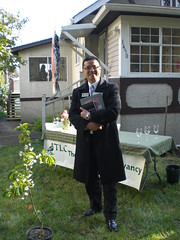


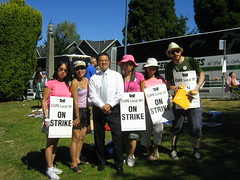
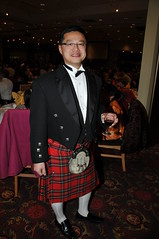

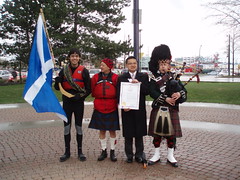
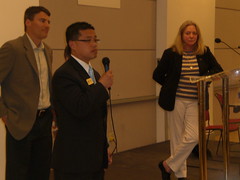

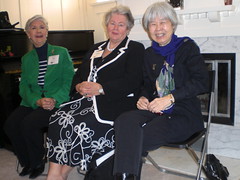

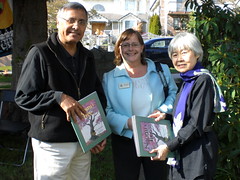









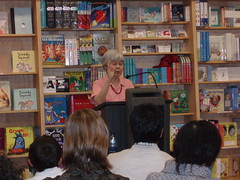
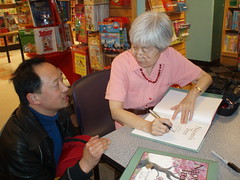

 Date: Thursday April 10th, 2008
Date: Thursday April 10th, 2008